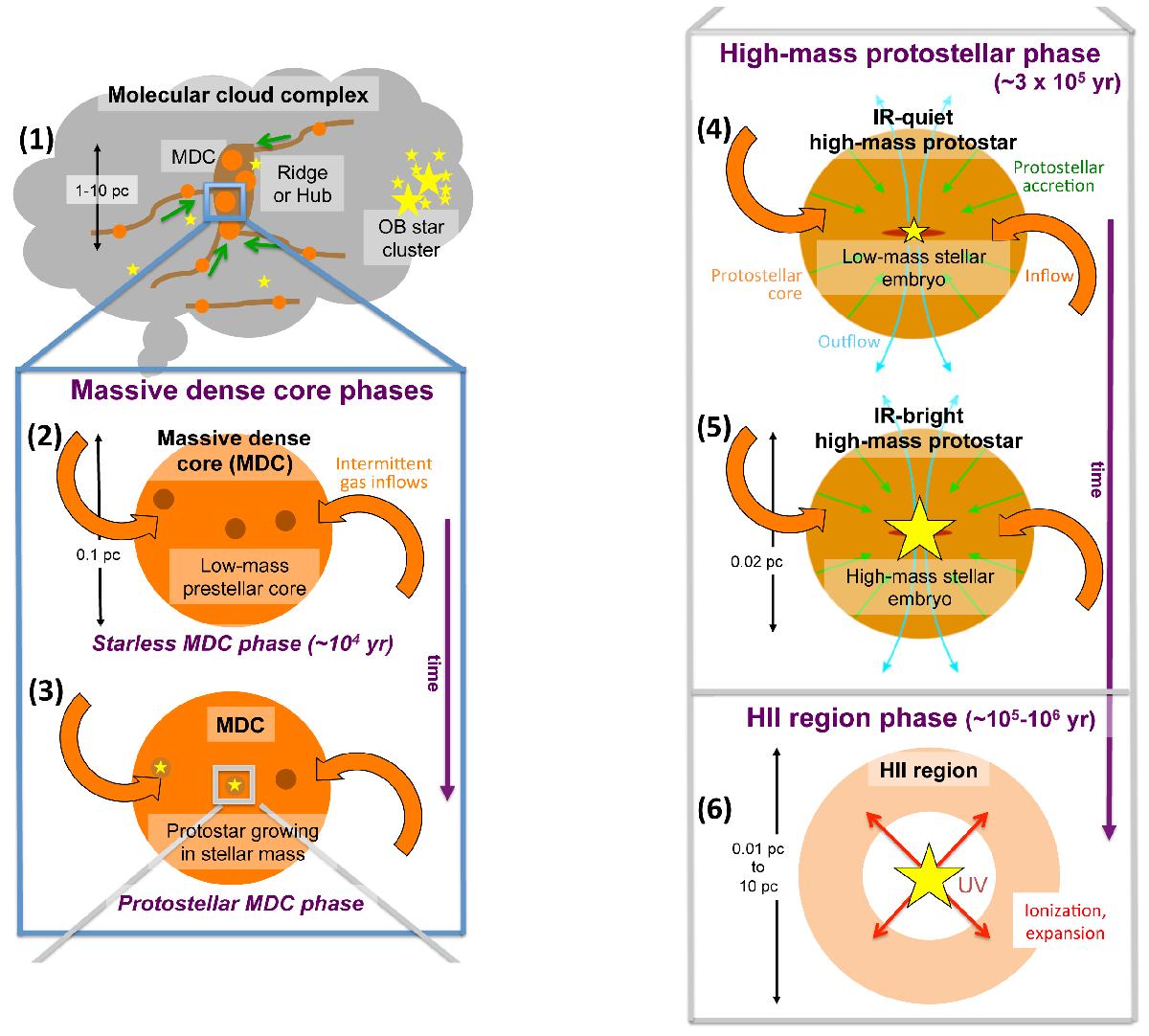Fig. 8

Schematic evolutionary diagram proposed for the formation of high-mass stars. (1) Massive filaments and spherical clumps, called ridges and hubs, host massive dense cores (MDCs, 0.1 pc) forming high-mass stars. (2) During their starless phase, MDCs only harbor low-mass prestellar cores. (3) IR-quiet MDCs become protostellar when hosting a stellar embryo of low mass. The local 0.02 pc protostellar collapse is accompanied by the global 0.1−1 pc collapse of MDCs and ridges/hubs. (4) Protostellar envelopes feed from these gravitationally-driven inflows, leading to the formation of high-mass protostars. The latter are IR-quiet as long as their stellar embryos remain low-mass. (5) High-mass protostars become IR-bright for stellar embryos with masses larger than 8 M⊙. (6) The main accretion phase terminates when the stellar UV field ionizes the protostellar envelope and an H ii region develops.
Current usage metrics show cumulative count of Article Views (full-text article views including HTML views, PDF and ePub downloads, according to the available data) and Abstracts Views on Vision4Press platform.
Data correspond to usage on the plateform after 2015. The current usage metrics is available 48-96 hours after online publication and is updated daily on week days.
Initial download of the metrics may take a while.


